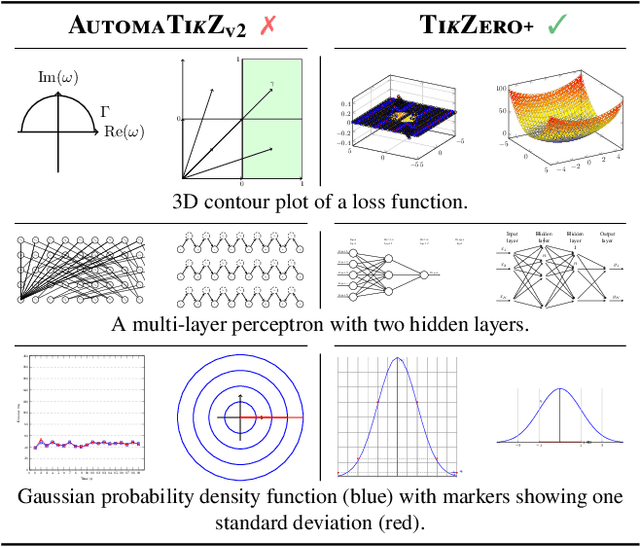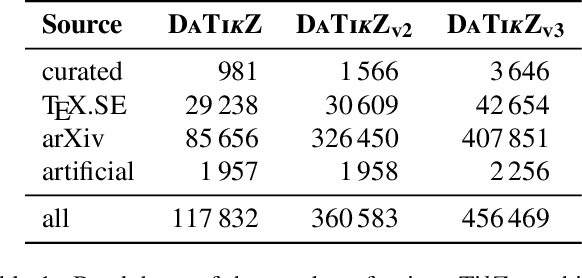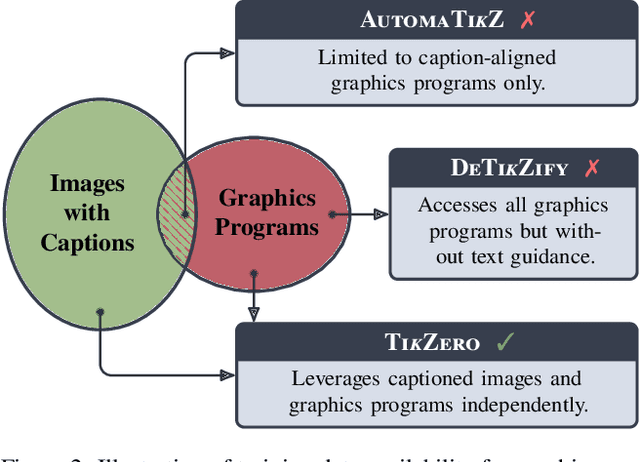Steffen Eger
LLM Analysis of 150+ years of German Parliamentary Debates on Migration Reveals Shift from Post-War Solidarity to Anti-Solidarity in the Last Decade
Sep 08, 2025Abstract:Migration has been a core topic in German political debate, from millions of expellees post World War II over labor migration to refugee movements in the recent past. Studying political speech regarding such wide-ranging phenomena in depth traditionally required extensive manual annotations, limiting the scope of analysis to small subsets of the data. Large language models (LLMs) have the potential to partially automate even complex annotation tasks. We provide an extensive evaluation of a multiple LLMs in annotating (anti-)solidarity subtypes in German parliamentary debates compared to a large set of thousands of human reference annotations (gathered over a year). We evaluate the influence of model size, prompting differences, fine-tuning, historical versus contemporary data; and we investigate systematic errors. Beyond methodological evaluation, we also interpret the resulting annotations from a social science lense, gaining deeper insight into (anti-)solidarity trends towards migrants in the German post-World War II period and recent past. Our data reveals a high degree of migrant-directed solidarity in the postwar period, as well as a strong trend towards anti-solidarity in the German parliament since 2015, motivating further research. These findings highlight the promise of LLMs for political text analysis and the importance of migration debates in Germany, where demographic decline and labor shortages coexist with rising polarization.
3DFroMLLM: 3D Prototype Generation only from Pretrained Multimodal LLMs
Aug 12, 2025Abstract:Recent Multi-Modal Large Language Models (MLLMs) have demonstrated strong capabilities in learning joint representations from text and images. However, their spatial reasoning remains limited. We introduce 3DFroMLLM, a novel framework that enables the generation of 3D object prototypes directly from MLLMs, including geometry and part labels. Our pipeline is agentic, comprising a designer, coder, and visual inspector operating in a refinement loop. Notably, our approach requires no additional training data or detailed user instructions. Building on prior work in 2D generation, we demonstrate that rendered images produced by our framework can be effectively used for image classification pretraining tasks and outperforms previous methods by 15%. As a compelling real-world use case, we show that the generated prototypes can be leveraged to improve fine-grained vision-language models by using the rendered, part-labeled prototypes to fine-tune CLIP for part segmentation and achieving a 55% accuracy improvement without relying on any additional human-labeled data.
LLLMs: A Data-Driven Survey of Evolving Research on Limitations of Large Language Models
May 25, 2025Abstract:Large language model (LLM) research has grown rapidly, along with increasing concern about their limitations such as failures in reasoning, hallucinations, and limited multilingual capability. In this survey, we conduct a data-driven, semi-automated review of research on limitations of LLM (LLLMs) from 2022 to 2024 using a bottom-up approach. From a corpus of 250,000 ACL and arXiv papers, we identify 14,648 relevant papers using keyword filtering, LLM-based classification, validated against expert labels, and topic clustering (via two approaches, HDBSCAN+BERTopic and LlooM). We find that LLM-related research increases over fivefold in ACL and fourfold in arXiv. Since 2022, LLLMs research grows even faster, reaching over 30% of LLM papers by late 2024. Reasoning remains the most studied limitation, followed by generalization, hallucination, bias, and security. The distribution of topics in the ACL dataset stays relatively stable over time, while arXiv shifts toward safety and controllability (with topics like security risks, alignment, hallucinations, knowledge editing), and multimodality between 2022 and 2024. We release a dataset of annotated abstracts and a validated methodology, and offer a quantitative view of trends in LLM limitations research.
CROC: Evaluating and Training T2I Metrics with Pseudo- and Human-Labeled Contrastive Robustness Checks
May 16, 2025Abstract:The assessment of evaluation metrics (meta-evaluation) is crucial for determining the suitability of existing metrics in text-to-image (T2I) generation tasks. Human-based meta-evaluation is costly and time-intensive, and automated alternatives are scarce. We address this gap and propose CROC: a scalable framework for automated Contrastive Robustness Checks that systematically probes and quantifies metric robustness by synthesizing contrastive test cases across a comprehensive taxonomy of image properties. With CROC, we generate a pseudo-labeled dataset (CROC$^{syn}$) of over one million contrastive prompt-image pairs to enable a fine-grained comparison of evaluation metrics. We also use the dataset to train CROCScore, a new metric that achieves state-of-the-art performance among open-source methods, demonstrating an additional key application of our framework. To complement this dataset, we introduce a human-supervised benchmark (CROC$^{hum}$) targeting especially challenging categories. Our results highlight robustness issues in existing metrics: for example, many fail on prompts involving negation, and all tested open-source metrics fail on at least 25% of cases involving correct identification of body parts.
LiTransProQA: an LLM-based Literary Translation evaluation metric with Professional Question Answering
May 09, 2025



Abstract:The impact of Large Language Models (LLMs) has extended into literary domains. However, existing evaluation metrics prioritize mechanical accuracy over artistic expression and tend to overrate machine translation (MT) as being superior to experienced professional human translation. In the long run, this bias could result in a permanent decline in translation quality and cultural authenticity. In response to the urgent need for a specialized literary evaluation metric, we introduce LiTransProQA, a novel, reference-free, LLM-based question-answering framework designed specifically for literary translation evaluation. LiTransProQA uniquely integrates insights from professional literary translators and researchers, focusing on critical elements in literary quality assessment such as literary devices, cultural understanding, and authorial voice. Our extensive evaluation shows that while literary-finetuned XCOMET-XL yields marginal gains, LiTransProQA substantially outperforms current metrics, achieving up to 0.07 gain in correlation (ACC-EQ and Kendall's tau) and surpassing the best state-of-the-art metrics by over 15 points in adequacy assessments. Incorporating professional translator insights as weights further improves performance, highlighting the value of translator inputs. Notably, LiTransProQA approaches human-level evaluation performance comparable to trained linguistic annotators. It demonstrates broad applicability to open-source models such as LLaMA3.3-70b and Qwen2.5-32b, indicating its potential as an accessible and training-free literary evaluation metric and a valuable tool for evaluating texts that require local processing due to copyright or ethical considerations.
TransProQA: an LLM-based literary Translation evaluation metric with Professional Question Answering
May 08, 2025



Abstract:The impact of Large Language Models (LLMs) has extended into literary domains. However, existing evaluation metrics prioritize mechanical accuracy over artistic expression and tend to overrate machine translation (MT) as being superior to experienced professional human translation. In the long run, this bias could result in a permanent decline in translation quality and cultural authenticity. In response to the urgent need for a specialized literary evaluation metric, we introduce TransProQA, a novel, reference-free, LLM-based question-answering (QA) framework designed specifically for literary translation evaluation. TransProQA uniquely integrates insights from professional literary translators and researchers, focusing on critical elements in literary quality assessment such as literary devices, cultural understanding, and authorial voice. Our extensive evaluation shows that while literary-finetuned XCOMET-XL yields marginal gains, TransProQA substantially outperforms current metrics, achieving up to 0.07 gain in correlation (ACC-EQ and Kendall's tau) and surpassing the best state-of-the-art (SOTA) metrics by over 15 points in adequacy assessments. Incorporating professional translator insights as weights further improves performance, highlighting the value of translator inputs. Notably, TransProQA approaches human-level evaluation performance comparable to trained linguistic annotators. It demonstrates broad applicability to open-source models such as LLaMA3.3-70b and Qwen2.5-32b, indicating its potential as an accessible and training-free literary evaluation metric and a valuable tool for evaluating texts that require local processing due to copyright or ethical considerations.
DeepSeek vs. o3-mini: How Well can Reasoning LLMs Evaluate MT and Summarization?
Apr 10, 2025Abstract:Reasoning-enabled large language models (LLMs) have recently demonstrated impressive performance in complex logical and mathematical tasks, yet their effectiveness in evaluating natural language generation remains unexplored. This study systematically compares reasoning-based LLMs (DeepSeek-R1 and OpenAI o3) with their non-reasoning counterparts across machine translation (MT) and text summarization (TS) evaluation tasks. We evaluate eight models across three architectural categories, including state-of-the-art reasoning models, their distilled variants (ranging from 8B to 70B parameters), and equivalent conventional, non-reasoning LLMs. Our experiments on WMT23 and SummEval benchmarks reveal that the benefits of reasoning capabilities are highly model and task-dependent: while OpenAI o3-mini models show consistent performance improvements with increased reasoning intensity, DeepSeek-R1 underperforms compared to its non-reasoning variant, with exception to certain aspects of TS evaluation. Correlation analysis demonstrates that increased reasoning token usage positively correlates with evaluation quality in o3-mini models. Furthermore, our results show that distillation of reasoning capabilities maintains reasonable performance in medium-sized models (32B) but degrades substantially in smaller variants (8B). This work provides the first comprehensive assessment of reasoning LLMs for NLG evaluation and offers insights into their practical use.
ContrastScore: Towards Higher Quality, Less Biased, More Efficient Evaluation Metrics with Contrastive Evaluation
Apr 02, 2025Abstract:Evaluating the quality of generated text automatically remains a significant challenge. Conventional reference-based metrics have been shown to exhibit relatively weak correlation with human evaluations. Recent research advocates the use of large language models (LLMs) as source-based metrics for natural language generation (NLG) assessment. While promising, LLM-based metrics, particularly those using smaller models, still fall short in aligning with human judgments. In this work, we introduce ContrastScore, a contrastive evaluation metric designed to enable higher-quality, less biased, and more efficient assessment of generated text. We evaluate ContrastScore on two NLG tasks: machine translation and summarization. Experimental results show that ContrastScore consistently achieves stronger correlation with human judgments than both single-model and ensemble-based baselines. Notably, ContrastScore based on Qwen 3B and 0.5B even outperforms Qwen 7B, despite having only half as many parameters, demonstrating its efficiency. Furthermore, it effectively mitigates common evaluation biases such as length and likelihood preferences, resulting in more robust automatic evaluation.
TikZero: Zero-Shot Text-Guided Graphics Program Synthesis
Mar 14, 2025



Abstract:With the rise of generative AI, synthesizing figures from text captions becomes a compelling application. However, achieving high geometric precision and editability requires representing figures as graphics programs in languages like TikZ, and aligned training data (i.e., graphics programs with captions) remains scarce. Meanwhile, large amounts of unaligned graphics programs and captioned raster images are more readily available. We reconcile these disparate data sources by presenting TikZero, which decouples graphics program generation from text understanding by using image representations as an intermediary bridge. It enables independent training on graphics programs and captioned images and allows for zero-shot text-guided graphics program synthesis during inference. We show that our method substantially outperforms baselines that can only operate with caption-aligned graphics programs. Furthermore, when leveraging caption-aligned graphics programs as a complementary training signal, TikZero matches or exceeds the performance of much larger models, including commercial systems like GPT-4o. Our code, datasets, and select models are publicly available.
BatchGEMBA: Token-Efficient Machine Translation Evaluation with Batched Prompting and Prompt Compression
Mar 04, 2025Abstract:Recent advancements in Large Language Model (LLM)-based Natural Language Generation evaluation have largely focused on single-example prompting, resulting in significant token overhead and computational inefficiencies. In this work, we introduce BatchGEMBA-MQM, a framework that integrates batched prompting with the GEMBA-MQM metric for machine translation evaluation. Our approach aggregates multiple translation examples into a single prompt, reducing token usage by 2-4 times (depending on the batch size) relative to single-example prompting. Furthermore, we propose a batching-aware prompt compression model that achieves an additional token reduction of 13-15% on average while also showing ability to help mitigate batching-induced quality degradation. Evaluations across several LLMs (GPT-4o, GPT-4o-mini, Mistral Small, Phi4, and CommandR7B) and varying batch sizes reveal that while batching generally negatively affects quality (but sometimes not substantially), prompt compression does not degrade further, and in some cases, recovers quality loss. For instance, GPT-4o retains over 90% of its baseline performance at a batch size of 4 when compression is applied, compared to a 44.6% drop without compression. We plan to release our code and trained models at https://github.com/NL2G/batchgemba to support future research in this domain.
 Add to Chrome
Add to Chrome Add to Firefox
Add to Firefox Add to Edge
Add to Edge